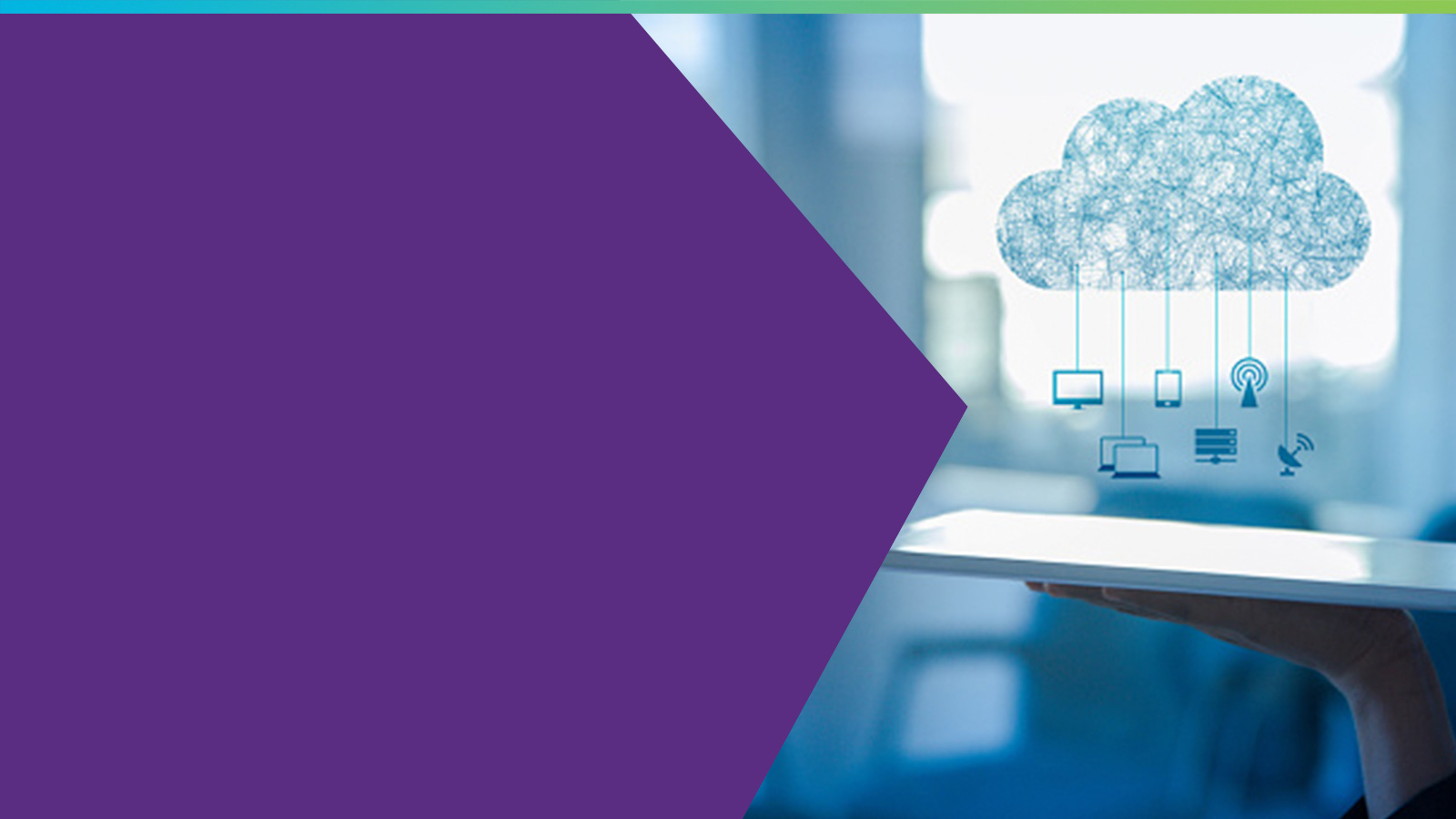Are You Ready to Step into the Public Safety Cloud?
Not All Clouds Are Created Equal We can all attest to a general shift toward cloud computing amongst the services and applications that touch our...
The cloud has changed everything around us. Cloud technology—meaning the delivery of computing services over the Internet—now supports much of our entertainment, banking, government, education, healthcare, retail and more.
There are, of course, plenty of good reasons so many aspects of society have shifted to running their operations in the cloud (more on those benefits a bit later). But while the marketplace has largely embraced this transition, public safety is still catching up. And that includes PSAPs/ECCs.
“Most call centers outside of public safety have already moved to a cloud-based call center as a service model,” notes Adan Pope, Intrado’s chief technology officer, who moderated a recent “911 Live” session on this topic. “This change is definitely coming, and it’s coming fast.” A 2019 report by Gartner predicted that by 2025, 80% of businesses will have closed their traditional, on-premises data centers.
Choosing a Cloud-based Call-handling Solution
The first thing to understand about moving to the cloud is that it’s not an all-or-nothing proposition. “We’re in public safety so we need to be very careful about any risks associated with a change like this,” says Pope. “At Intrado, we believe a hybrid cloud solution for call-handling will persist for a long time.” That means maintaining some on-site equipment for added redundancy. And too, that your PSAP’s move to the cloud may look different from a neighboring jurisdiction’s; there is no one-size-fits-all.
That said, it’s worth asking yourself what it would take for your agency to move toward procuring a cloud-based call-handing solution once you’re ready to do so. The most common reason: wanting to shift to a Next Generation 911 (NG911) environment for taking, processing and routing emergency calls and other data, like text and video.
“More specifically, the trigger is migrating to Next Generation Core Services (NGCS) and an ESInet,” explains Lev Deich. “Once you have those pieces and you migrate more pieces toward an Internet Protocol (IP) connection, you put yourself in a great situation to be ready for a cloud-based solution.” (ESInet is short for “Emergency Services Internet Protocol Network ,” and NGCS refers to services needed to process a 911 call on the ESInet, such as routing, location validation, policy and other functions.)
If you opt for a hybrid cloud situation, you may have Intrado’s VIPER® call-handling solution, in which the data center is hosted in a centralized location, while your ECC still has some hardware that interfaces with legacy systems. In this example, call-takers would log into Intrado’s Power 911® workstation, a web-based application that’s always current, eliminating the need for upgrades. “It’s just like when you log into any type of hosted solution, like Zoom,” explains Deich.
Florida’s Palm Beach County was an early adopter of NG911, having implemented their ESInet and NGCS back in 2012. A long-time Intrado customer, the county uses the VIPER® call-handling solution. They started their migration to the cloud by putting their VIPERs into a hosted model. “In addition to providing a cost benefit, it also provided—for the first time—redundancy,” says Chuck Spalding. “Now I basically have two cores, and we’ve used this in many different ways.” The county keeps both cores active, and if one has an issue, the second takes up all the call load. “We’ve found this extremely beneficial in those cases where we’ve had to either a software or hardware upgrade. We’ll simply go in and move all the traffic to one of the cores and then do the work. This has provided seamless connections and service to the centers,” he adds.
Spalding has an added challenge: some of the PSAPs in his jurisdiction are located on islands. When an island was linked to the network by a single piece of fiber, there was no easy way to create diverse routing that would ensure connectivity at all times. “So we opted to go wireless,” he says. “It’s pretty commonplace in a number of industries, such as banking, to put in a wireless card in the router and use that wireless connection for backup. In our case, because we have such great FirstNet connectivity, we interconnected the FirstNet cloud into our network.”
Palm Beach County also used the wireless card option, along with an antenna, to create what are essentially mobile PSAPs that could be put on a vehicle and driven to an event such as a music festival or a protest. “Call-takers can log in and have access and not be worried about bandwidth contention,” he explains. “Again, this has been extremely stable for us.”
The Benefits of Cloud-based Call-handling
It’s natural to have concerns about embracing any new technology. But there are also powerful reasons to seriously consider a migration. “The first is to accelerate the regular adoption of new technology,” says Deich. “Currently, big projects have five-, seven-, eight-year upgrade cycles, which means innovation comes in spurts. We want to keep innovation going and always keep everyone up-to-date.” With the cloud, adoption of new technologies can happen at higher rates and much more quickly than in years past.
Even better, when you log into a cloud-based system, it’s always current and there is no downtime for regular upgrades. Everyone using the same version of the technology. And when new features are introduced, you can easily opt to try the beta version, Deich explains, and if you don’t like it, simply turn it off. “It really accelerates innovation. It gets new capabilities out in the field,” he says. “To get that adoption quickly, you need to be on a cloud-based solution.”
The second big benefit to the cloud is universal access—the ability to connect, anytime and anywhere. “With COVID, we saw some great examples of this in action,” Deich explains, noting the VPN-enabled VIPER®/Power 911® laptops used by Palm Beach County and in other parts of the country. The specially configured laptops allowed telecommunicators to connect remotely when the virus made it unsafe to go into ECCs. “It demonstrates there’s a need out there for this. We want to make it easier to connect from any facility, including from home, over any device, and over any type of connection, including wireless, commercial internet or private circuits,” he continues. “If you have that, it really opens up new opportunities for the PSAP.”
That kind of resiliency, especially without the need for specialized hardware, gives emergency communication centers a nimbleness and flexibility to respond in ways that previously weren’t possible. “Even if you have simple things, like a temporary staffing shortage, you can ask a neighboring jurisdiction to have one of their people take a shift, so you can better share resources. I think this is going to change the way PSAPs manage their people as well,” says Deich.
Lastly, handling 911 calls in the cloud is good for the bottom line. Today, there’s still a lot of equipment and infrastructure dedicated to your CAD and for radio. “That’s on top of your regular network you use for administrative purposes,” Deich notes. “If you move to the cloud, to a simplified architecture, do you need to have all these segregated networks and duplicated resources, equipment and maintenance? There are a lot of opportunities to simplify and lower costs.” Those savings can be used to pay for other programs and resources that serve your communities.
Concerned About the Cloud?
Let’s be honest: Being able to see, hear and touch the equipment in your back room is reassuring. “We all like to have everything in sight. The idea that you’re going to forklift out the VIPER® servers in the back room and put them somewhere else is a concern,” says Spalding, who has fielded plenty of questions about moving to the cloud over the years. “But clearly there have been a number of places around the country that have already moved to this model.”
So how do you get past worries that this new approach won’t function as well as what you’re already using? “At the end of the day, the people staffing the PSAP just want everything to work,” Spalding says. “In our case, it’s been an extremely stable environment. We always have a connection, whether it’s to the legacy selective router or to the cloud. That’s why you have to make sure you have the correct architecture that is going to allow the connectivity to stay in place.”
But the question remains a good one. After all, not all cloud-based call-handling solutions are alike, and not all are proven. “We’ve noticed this trend of some vendors building a brand-new solution from the ground up, which may sound like a great idea,” says Deich. “But when you build something from scratch, with software you’re always going to have some number of bugs. That creates more challenges and problems and increases the risk of a cloud migration.” That’s why at Intrado, PSAPs are moved to the cloud via the VIPER® platform, which is used by thousands of centers across the U.S. “It services more than 100 million 911 calls every single year,” he says. “And it’s compatible with every commercial next-gen provider in the country, which is really, really important.”
You may also wonder how your staff will react to a cloud-based call-handling solution. For Chuck Spalding’s team in Palm Beach County, the switch was nearly effortless. “There’s really no impact on them. They sit down and everything works, which is the number-one criteria,” he notes. “That’s always our goal, right? And the possibility of having a glitch with their on-site tools goes away. So it’s actually provided better service to the centers.”
Whenever you do decide to bring your call center into the cloud, it should start with a stable platform that has been field-tested and evolves over time. “That’s one of the ways you minimize those risks,” Deich says. For some time to come, the hybrid solution—some functions taking place in the cloud, some in your existing infrastructure—will be the way many centers operate. “It’s a logical step between where we are today—very on-prem-oriented—to more of a cloud-based future,” he adds.
And what might that future look like? For starters, keeping the experience streamlined for telecommunicators is paramount, says Deich. “At Intrado, our underlying new technology that allows you to do new things, but the user experience is exactly the same, even down the keyboard shortcuts you’re used to,” he explains. “So you can continue exactly the same workflows you had before. The difference is now, with a browser-based solution, it’s always up-to-date.”
Even better, Intrado has introduced a new technology, Web RTC, that introduces encryption directly from the workstation into the cloud, eliminating the need for VPNs. The need for special configuration is gone—security is built right in. Also built in is the ability to integrate with other vendors’ products, with Emergency Call Tracking System (ECaTS), and with Intrado GIS mapping solutions including Spatial Manager, Spatial Command & Control and Spatial Verify.
“All of these pieces work together and that in itself is going to trigger a lot of brand-new innovation,” Deich notes. “As an industry, we have an opportunity to really transform the PSAP as a whole. We’re really excited to be part of that journey.”
Ready to start a conversation about Intrado’s cloud-based and hybrid call-handling solutions? Let’s talk.

Not All Clouds Are Created Equal We can all attest to a general shift toward cloud computing amongst the services and applications that touch our...

Intrado’s managed evolution to the cloud means that our network is extraordinarily resilient and flexible, whether you’re a big city PSAP or a...

One of the constant refrains we hear from our customers at emergency call centers is that staffing is an ongoing and persistent challenge. While it...